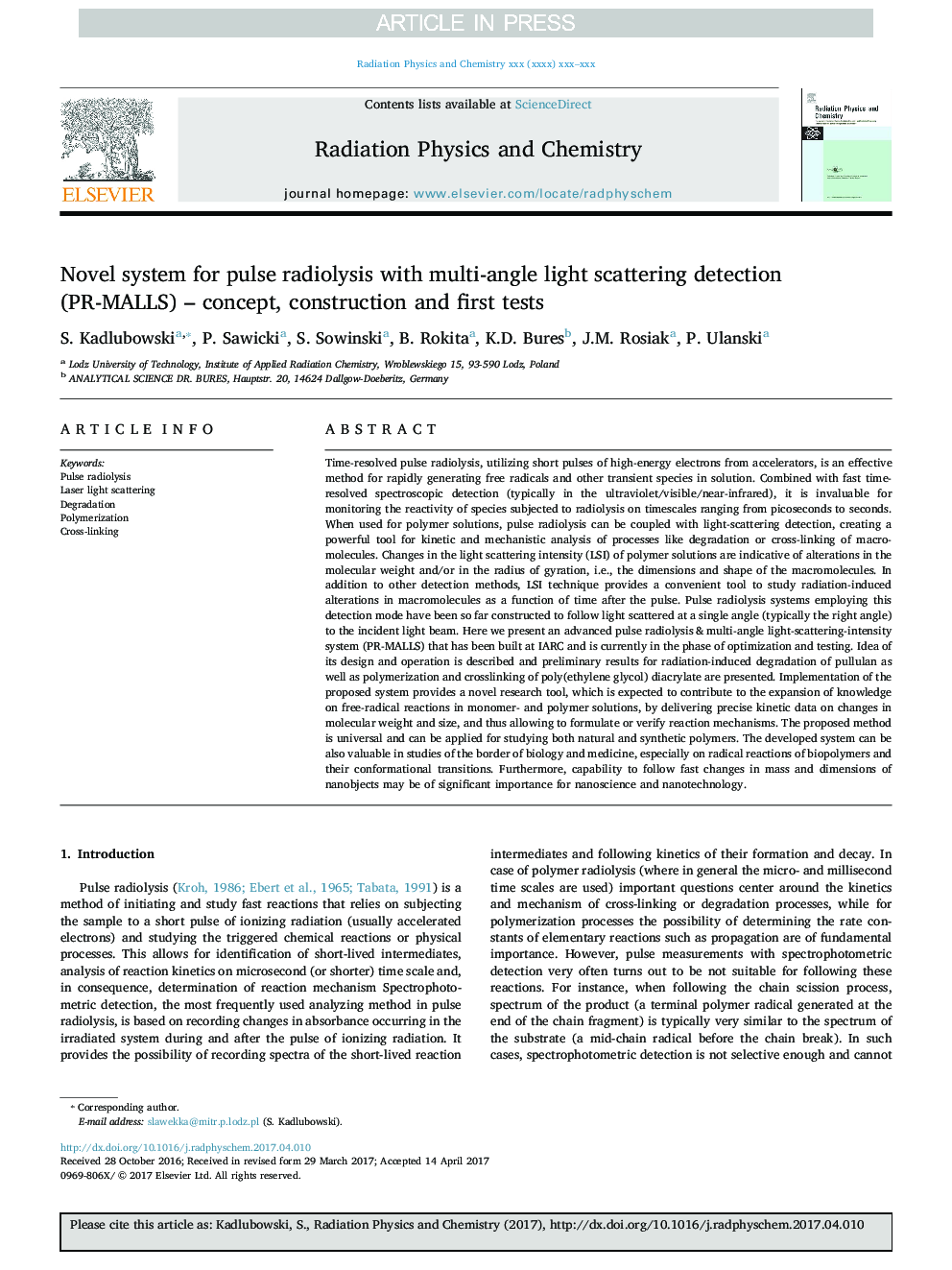| کد مقاله | کد نشریه | سال انتشار | مقاله انگلیسی | نسخه تمام متن |
|---|---|---|---|---|
| 8251767 | 1533482 | 2018 | 5 صفحه PDF | دانلود رایگان |
عنوان انگلیسی مقاله ISI
Novel system for pulse radiolysis with multi-angle light scattering detection (PR-MALLS) - concept, construction and first tests
دانلود مقاله + سفارش ترجمه
دانلود مقاله ISI انگلیسی
رایگان برای ایرانیان
کلمات کلیدی
موضوعات مرتبط
مهندسی و علوم پایه
فیزیک و نجوم
تشعشع
پیش نمایش صفحه اول مقاله

چکیده انگلیسی
Time-resolved pulse radiolysis, utilizing short pulses of high-energy electrons from accelerators, is an effective method for rapidly generating free radicals and other transient species in solution. Combined with fast time-resolved spectroscopic detection (typically in the ultraviolet/visible/near-infrared), it is invaluable for monitoring the reactivity of species subjected to radiolysis on timescales ranging from picoseconds to seconds. When used for polymer solutions, pulse radiolysis can be coupled with light-scattering detection, creating a powerful tool for kinetic and mechanistic analysis of processes like degradation or cross-linking of macromolecules. Changes in the light scattering intensity (LSI) of polymer solutions are indicative of alterations in the molecular weight and/or in the radius of gyration, i.e., the dimensions and shape of the macromolecules. In addition to other detection methods, LSI technique provides a convenient tool to study radiation-induced alterations in macromolecules as a function of time after the pulse. Pulse radiolysis systems employing this detection mode have been so far constructed to follow light scattered at a single angle (typically the right angle) to the incident light beam. Here we present an advanced pulse radiolysis & multi-angle light-scattering-intensity system (PR-MALLS) that has been built at IARC and is currently in the phase of optimization and testing. Idea of its design and operation is described and preliminary results for radiation-induced degradation of pullulan as well as polymerization and crosslinking of poly(ethylene glycol) diacrylate are presented. Implementation of the proposed system provides a novel research tool, which is expected to contribute to the expansion of knowledge on free-radical reactions in monomer- and polymer solutions, by delivering precise kinetic data on changes in molecular weight and size, and thus allowing to formulate or verify reaction mechanisms. The proposed method is universal and can be applied for studying both natural and synthetic polymers. The developed system can be also valuable in studies of the border of biology and medicine, especially on radical reactions of biopolymers and their conformational transitions. Furthermore, capability to follow fast changes in mass and dimensions of nanobjects may be of significant importance for nanoscience and nanotechnology.
ناشر
Database: Elsevier - ScienceDirect (ساینس دایرکت)
Journal: Radiation Physics and Chemistry - Volume 142, January 2018, Pages 9-13
Journal: Radiation Physics and Chemistry - Volume 142, January 2018, Pages 9-13
نویسندگان
S. Kadlubowski, P. Sawicki, S. Sowinski, B. Rokita, K.D. Bures, J.M. Rosiak, P. Ulanski,